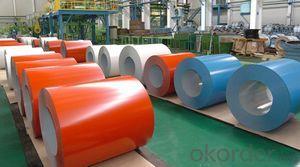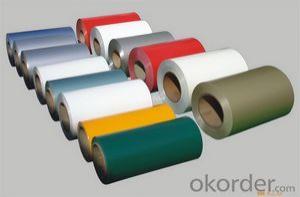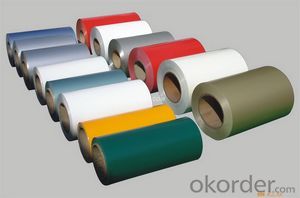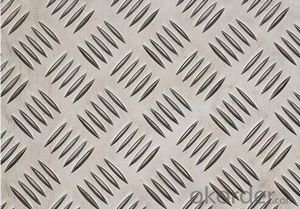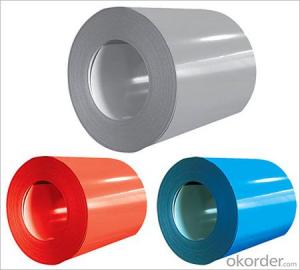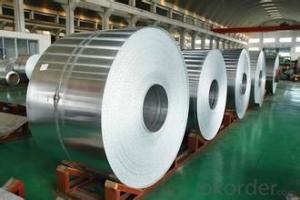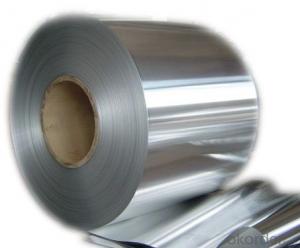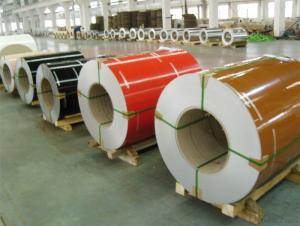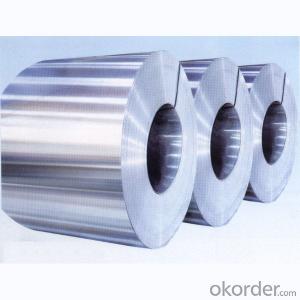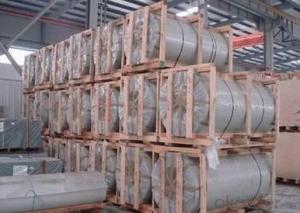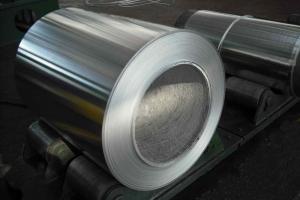1060 AA 5052 Coated Aluminum Coils for Sale
- Loading Port:
- China Main Port
- Payment Terms:
- TT OR LC
- Min Order Qty:
- -
- Supply Capability:
- -
OKorder Service Pledge
Quality Product, Order Online Tracking, Timely Delivery
OKorder Financial Service
Credit Rating, Credit Services, Credit Purchasing
You Might Also Like
supply Mill-finished / coated aluminum plate/sheet/ coil:
Alloy: AA1050,1060,1100,1200,2024,3003,3304,3005,3015,5052,5086,5754,5083,6061,7050,7475,8011, etc
Temper: O, H14/16/18/22/24/32/ H112/H321/T6,T851,T7451,T7351, etc
Thickness: 0.02mm—20mm
Width: 100mm—2000mm (Can be slitted)
Notice: PE coating / PVDF coating / Embossment can be done if required.
- Q: This question asks for methods to prevent rust formation on aluminum coils during indoor storage.
- <p>To prevent rust on aluminum coils when storing them indoors, ensure that the storage area is clean and dry. Keep the coils away from moisture and humidity, as these can cause oxidation. Use protective wrapping or coverings to shield the coils from dust and airborne moisture. Regularly inspect the coils for any signs of condensation or dampness and address these promptly. Maintain proper ventilation in the storage area to reduce humidity levels. Additionally, avoid stacking the coils directly on the ground; use pallets or racks to elevate them, which helps in air circulation and prevents contact with moisture that could be present on the floor.</p>
- Q: What are the common cutting and shaping methods for aluminum coils?
- Depending on the desired outcome and application, there are several cutting and shaping methods for aluminum coils. One of the most frequently used methods is shearing, which involves cutting the aluminum coil with a sharp blade. Shearing is suitable for straight cuts and is commonly employed in manufacturing automotive parts or construction materials that require precise dimensions. Slitting is another method that involves cutting the aluminum coil into narrower strips. Industries such as packaging often utilize slitting to create thin strips of aluminum for products like food packaging or aluminum foil. For more complex shapes like curves or bends, press brake forming is often employed. In this process, the aluminum coil is placed in a press brake machine and bent into the desired shape using a punch and die. Press brake forming is commonly used in industries like aerospace or architectural design, where intricate shapes are necessary. Additionally, laser cutting is a popular method for cutting aluminum coils. This method uses a high-powered laser beam to cut through the aluminum, allowing for precise and intricate cuts. Industries like signage or electronics often utilize laser cutting for creating detailed designs. In conclusion, the common cutting and shaping methods for aluminum coils include shearing, slitting, press brake forming, and laser cutting. These methods provide manufacturers with various options to shape aluminum coils according to their specific needs and requirements.
- Q: Are there any specific regulations or standards for aluminum coil production?
- Aluminum coil production is subject to specific regulations and standards that exist to guarantee the quality, safety, and sustainability of the process. The American Society for Testing and Materials (ASTM) International standard, specifically ASTM B209, is a crucial standard for aluminum coil production. This standard outlines the necessary chemical composition, mechanical properties, and technical requirements that aluminum coils must adhere to. Aside from ASTM standards, regulatory bodies like the International Organization for Standardization (ISO) and the Occupational Safety and Health Administration (OSHA) also establish regulations and standards. ISO 9001 is a widely recognized standard for quality management systems, while ISO 14001 focuses on environmental management systems. These standards provide guidance and requirements to ensure quality, environmental responsibility, and worker safety during the production process. Moreover, it's important to note that specific regulations may vary depending on the country or region. For instance, in the United States, the Environmental Protection Agency (EPA) oversees emissions and waste disposal related to aluminum coil production through the Clean Air Act and the Resource Conservation and Recovery Act (RCRA). These regulations aim to minimize the environmental impact associated with the production process. Overall, the purpose of these regulations and standards is to uphold the quality, safety, and environmental sustainability of the aluminum coil production industry. Manufacturers must comply with these regulations and standards to ensure that their products meet the necessary specifications and are produced in a responsible manner.
- Q: Can aluminum coils be used in solar thermal systems?
- Yes, aluminum coils can be used in solar thermal systems. Aluminum is a commonly used material for heat transfer in such systems due to its excellent thermal conductivity and corrosion resistance.
- Q: What specific cleaning procedures should be followed for aluminum coils post-usage to ensure their longevity and functionality?
- <p>After using aluminum coils, it's important to clean them properly to maintain their performance and longevity. Typically, a mild detergent and warm water solution can be used to gently clean the coils. Avoid abrasive materials or harsh chemicals that could scratch the surface. Rinse thoroughly to remove all detergent residues. For stubborn residues, a soft cloth or sponge can be used. It's also crucial to dry the coils completely to prevent corrosion. Regular inspection and maintenance, including cleaning, will help extend the life of aluminum coils.</p>
- Q: Are aluminum coils compatible with different joining methods?
- Different joining methods can be used with aluminum coils. Aluminum, a versatile metal, can be joined using techniques like welding, brazing, soldering, and mechanical fastening. The choice of method depends on the specific application and desired joint properties. To join aluminum coils, welding is commonly used as it creates a strong and durable bond. Various welding techniques, such as MIG, TIG, and resistance welding, can be employed based on the thickness and alloy type. Brazing is another effective method for joining aluminum coils. It involves heating a filler material with a lower melting point than the base metal to create a strong joint. Brazing is suitable when joining aluminum coils with dissimilar metals. For thin aluminum coils or when a lower temperature method is necessary, soldering is a suitable option. It involves melting a low-temperature alloy (solder) to join the coils together. Soldering finds common use in electronics and plumbing applications. Mechanical fastening methods like bolts, screws, rivets, or clips can also be used to join aluminum coils. These methods provide a reliable and removable joint, making them appropriate for applications requiring disassembly. In conclusion, different joining methods, including welding, brazing, soldering, and mechanical fastening, can be used with aluminum coils. The choice depends on factors like the application, alloy type, and desired joint properties.
- Q: What are the different hardness levels of aluminum coils?
- The hardness levels of aluminum coils are typically categorized into a range from soft to hard, with soft being the lowest hardness level and hard being the highest.
- Q: i know that your not suppose to use DC for aluminum only with AC but is it possible?
- yes
- Q: A cube of solid aluminum has a volume of 1.00 m3 at 20°C. What temperature change is required to produce a 130 cm3 increase in the volume of the cube?
- The linear expansivity of aluminum is 23 x10^-6 /K. Bulk expansivity is 3 x 23 x10^-6 / k For 130 [cm^3] the temperature required is 130 [cm] ^3/ 3 x 23 x10^-6 = 0.00013/[3 x 23 x10^-6] = 1.88 K ========================= If each side of the cube of side 1m expands by e, then its new volume = [1+e]^3 = 1 + 3e + 3e^2 +e^3. Neglecting high powers of e as negligible, the increase in volume is 3e. But e = 23 x10^-6 x rise in temperature 3e = 3*23 x10^-6 x rise in temperature. Given 3e = 0.00013 0.00013= 3*23 x10^-6 x rise in temperature Rise in temperature = 0.00013 / 3*23 x10^-6 = 1.88 K
- Q: Is it safe to use aluminum coil for storing food?
- <p>Aluminum coil can be used for food storage, but with certain considerations. Aluminum is a good conductor of heat and is often used in cookware, but for long-term food storage, it's not ideal. It's important to ensure that the aluminum is coated or lined with a non-reactive material to prevent direct contact with food, as aluminum can leach into food and may have health implications. Additionally, aluminum is not recommended for acidic foods as it can react with them. For best food storage practices, consider using materials specifically designed for food contact, such as glass or food-grade plastic containers.</p>
Send your message to us
1060 AA 5052 Coated Aluminum Coils for Sale
- Loading Port:
- China Main Port
- Payment Terms:
- TT OR LC
- Min Order Qty:
- -
- Supply Capability:
- -
OKorder Service Pledge
Quality Product, Order Online Tracking, Timely Delivery
OKorder Financial Service
Credit Rating, Credit Services, Credit Purchasing
Similar products
Hot products
Hot Searches
Related keywords
